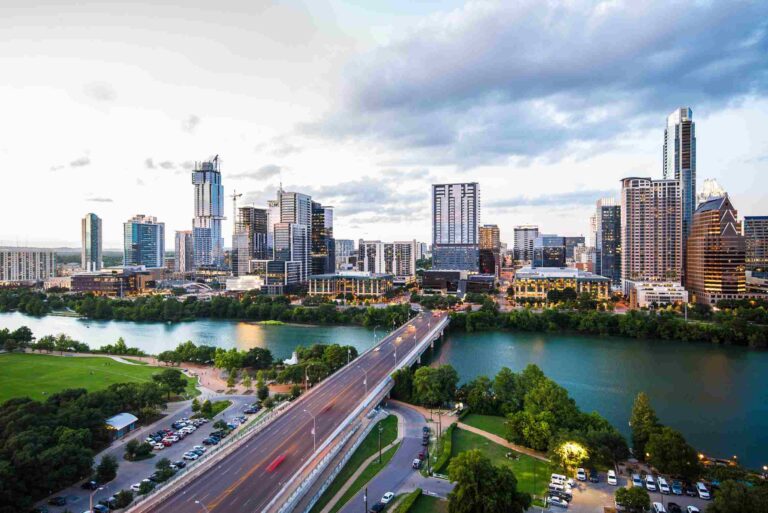Smart cities are the future. They’re built on the best modern technology, making them more efficient and sustainable than ever.
But what exactly makes a city smart? Is it just going high-tech, or is there more to it? In this blog post, we’ll explore what features make a city truly smart.
Table of Contents
The main features of smart cities
The following are the main features and characteristics of a smart city:
Smart buildings
A Smart Building is a building that has been designed and built to use less energy and water and to be more comfortable and healthy for its occupants.
A smart building uses sensors and other technologies to monitor the use of energy, water, and other resources. It then takes action based on this data to reduce consumption or improve efficiency.
Smart infrastructure
This is a combination of smart technology, digital services, and connected devices that work together to improve the way cities function.
Smart buildings make up a large part of smart infrastructure. These buildings use sensors to collect data about their own energy consumption or other parameters (like air quality). The data is shared with other connected devices or people through the Internet of Things (IoT). City leaders can then use the data to make decisions about how different aspects of city life should be run.
For example, traffic lights could be programmed to change more slowly if too many cars are on the road on any given day.
Smart mobility
Smart mobility is the integration of technology into public transport systems, such as buses and trains. The goal of smart mobility is to improve travel time and reduce congestion. This can be achieved by providing real-time information about bus routes, stops, and schedules.
Other features include smart ticketing systems that make it easier for passengers to purchase tickets from their devices. Smartphone apps that allow users to find out when the next bus will arrive at their stop. GPS tracking can help riders see where their vehicles are in real-time. Bicycle lanes separated from traffic on roads so cyclists can ride safely. Electric cars with charging stations installed throughout cities.
If you want your city’s public transportation system to be truly smart, then this feature should definitely be included as part of its design plan!
Smart energy system
Efficient use of energy is one of the most important aspects of a smart city. Energy consumption is one of the fastest-growing sectors in cities, so it’s important to make sure that you’re using it efficiently. Smart energy systems include smart meters, smart appliances, and even smart grids itself.
Smart meters can help consumers understand their energy consumption better and save money on their bills. It allows them to do this by monitoring how much electricity they use at any time.
They can also be used for automatic billing based on usage patterns instead of just traditional flat rates or fixed charges per month.
Smart technology
Smart technology is one of the most important features of a smart city.
It helps in improving the quality of life and enhances the efficiency of the city. It can be used to improve traffic management, waste management, pollution control, and parking management.
Smart healthcare
Smart healthcare is the next wave of innovation in the world of healthcare. Using technology and data to improve upon the existing system, smart healthcare will allow patients to have better access to their health records and medical history.
With this data, doctors can better understand every aspect of a patient’s health and improve their treatment plan accordingly.
Smart governance
A smart city must be governed in a transparent and open way. The government must be able to listen to the needs of its citizens and respond accordingly.
This means that the government should not only be able to make decisions based on the needs of its people but also have a way for citizens to provide feedback on those decisions so they can improve them over time.
Smart citizens
Smart citizens are able to use technology to improve their lives and the lives of others. They know how to use the tools at their disposal and can make better decisions based on data. This can include anything from finding the best way around town or helping someone else find their way home.
Smart citizens also want to do good for their community as a whole. They understand that there is no such thing as “too small” when it comes to making improvements in your city. If someone can think up an idea that improves something even just a little bit, then why not try it?
Read also: What is the “15-minutes city” model, a strategy for smart and sustainable urban planning












